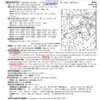I am being vexed on this question. I think that I have answered it correctly and the
test software is wrong. The Chart Supplement says that fuel is available from 1300-0500Z.
Since it is in September in Ohio, it is DST. Therefore, you would subtract 4 from the
1300 and the 0500 = 0900-0100 local time. Am I not correct?
Chart Supplement:
TOLEDO EXPRESS (TOL) 10W UTC—5(—4DT)
AIRPORT REMARKS: Attended continuously. Fuel and svc avbl 1300-05000Z.
Question:
According to the Chart Supplement, what times can a pilot obtain fuel and services in
September at Toledo Express (TOL) Airport?
A. 0900 - 0100 hr. local time.
B. 1300 - 0500 hr. local time.
C. 0800 - 0000 hr. local time
My answer: A. 0900 - 0100 hr. local time.
The software explanation:
(A) is incorrect.
This answer subtracts 4 hr. from 1300-0500Z++, neglecting to consider the 1 additional earlier hr.
Thanks.
test software is wrong. The Chart Supplement says that fuel is available from 1300-0500Z.
Since it is in September in Ohio, it is DST. Therefore, you would subtract 4 from the
1300 and the 0500 = 0900-0100 local time. Am I not correct?
Chart Supplement:
TOLEDO EXPRESS (TOL) 10W UTC—5(—4DT)
AIRPORT REMARKS: Attended continuously. Fuel and svc avbl 1300-05000Z.
Question:
According to the Chart Supplement, what times can a pilot obtain fuel and services in
September at Toledo Express (TOL) Airport?
A. 0900 - 0100 hr. local time.
B. 1300 - 0500 hr. local time.
C. 0800 - 0000 hr. local time
My answer: A. 0900 - 0100 hr. local time.
The software explanation:
(A) is incorrect.
This answer subtracts 4 hr. from 1300-0500Z++, neglecting to consider the 1 additional earlier hr.
Thanks.
Last edited:

